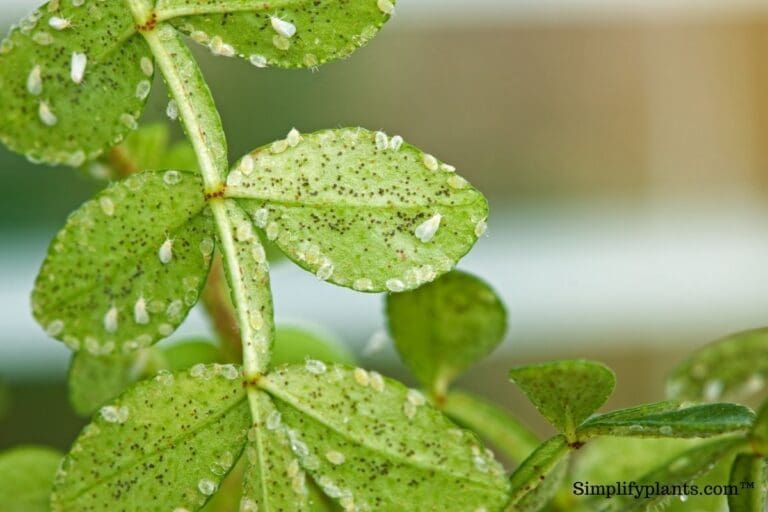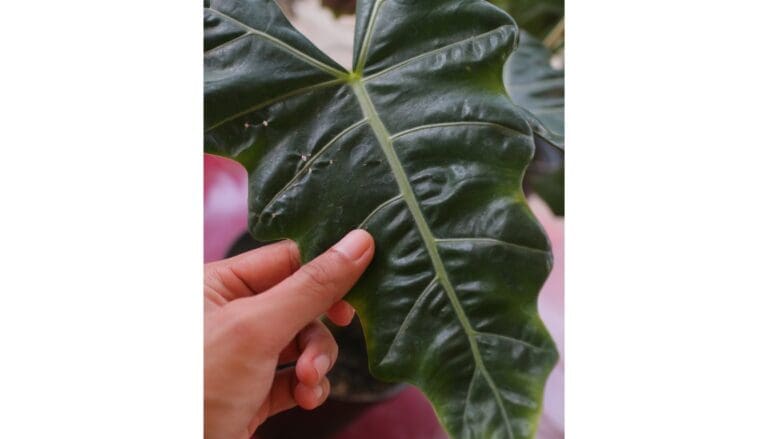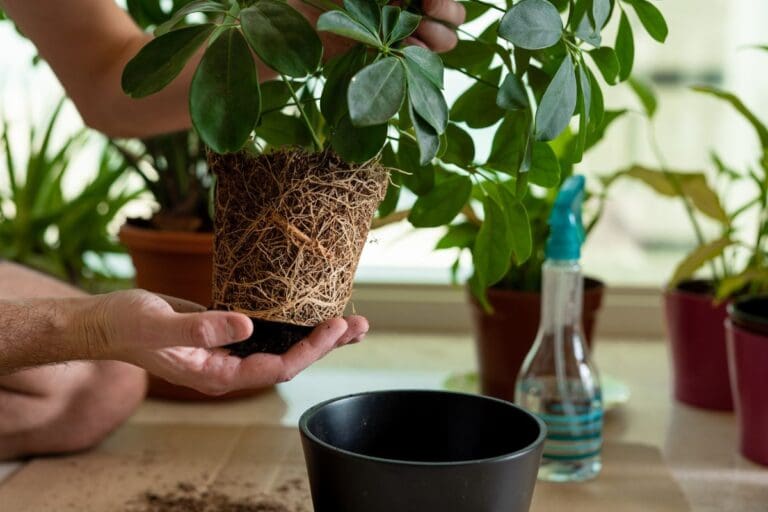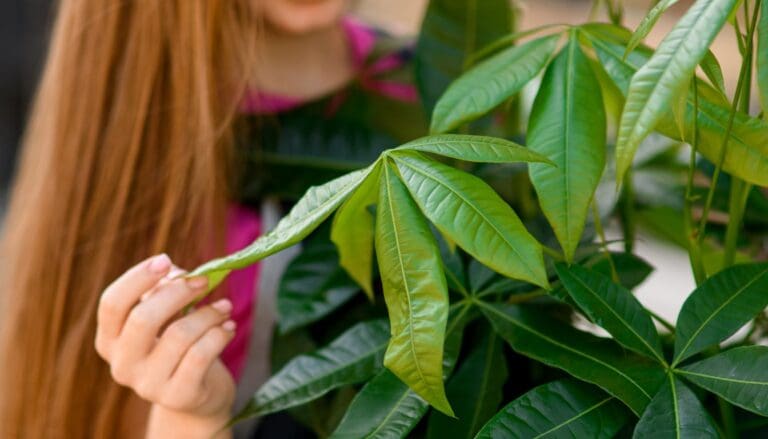5 Low-Tech Ways to Keep Houseplants Cool in Hot Rooms
When the temperature climbs, I can really see my houseplants start to droop. Warm rooms make leaves wilt and the soil dries out in no time.
So, here are a few low-tech tricks I use to help my plants stay cool when things heat up indoors. No need for fancy gear—these are simple, everyday fixes that anyone can try.
Please note: Simplify Plants is reader-supported. As an Amazon Associate, I earn from qualifying purchases made by our readers with no extra cost added to you all! Some links in the post are affiliate links and I get a commission from purchases made through links in the post.
1) Place plants near open windows for natural airflow
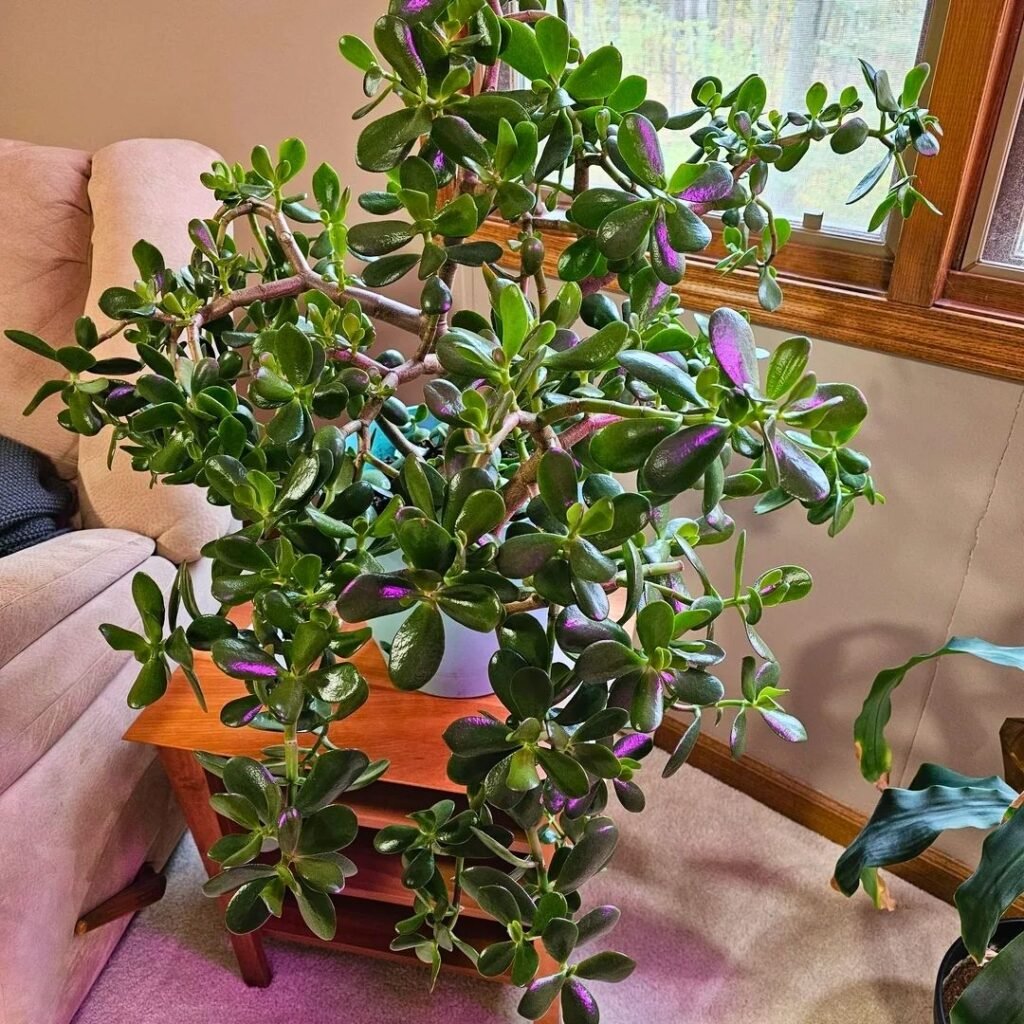
I like to move my houseplants close to open windows when things get stuffy. A gentle breeze cools the air around their leaves and helps with heat stress.
On sunny days, my plants look a lot less wilted when they’re near a window. Airflow helps moisture evaporate and keeps heat from building up.
I always check the weather, though. If it’s super windy, I’ll scoot delicate plants back a bit so they don’t lose any stems.
Some windowsills get blasted with direct sunlight, so I’ll hang a sheer curtain if the sunlight is too intense.
Giving plants a little breeze doesn’t call for any gadgets. It’s such a basic fix, but it really helps. Natural airflow keeps most plants comfy, and I don’t have to mess with fans or anything extra.
2) Use ceramic or terracotta pots to keep roots cooler

I’m a big fan of ceramic and terracotta pots because they keep my plants’ roots from overheating. These pots breathe a little, letting air and water move through the sides.
Terracotta pots actually soak up a bit of moisture, which then evaporates and keeps the soil cooler. Plastic pots, on the other hand, just trap heat, and roots don’t love that.
My plants always seem happier in clay pots during the summer. Roots stay cooler, and the soil dries out in a nice, even way.
If I water them in the morning, those pots feel cool all afternoon. It’s not magic, but it helps.
Ceramic pots are good too, as long as they’re not glazed inside. The main thing is letting the pot breathe and release heat.
Whenever I want to help my plants beat the heat, I always check what kind of pot they’re in. Switching to clay or terracotta is such an easy upgrade.
3) Set up a DIY pebble tray with water to increase humidity
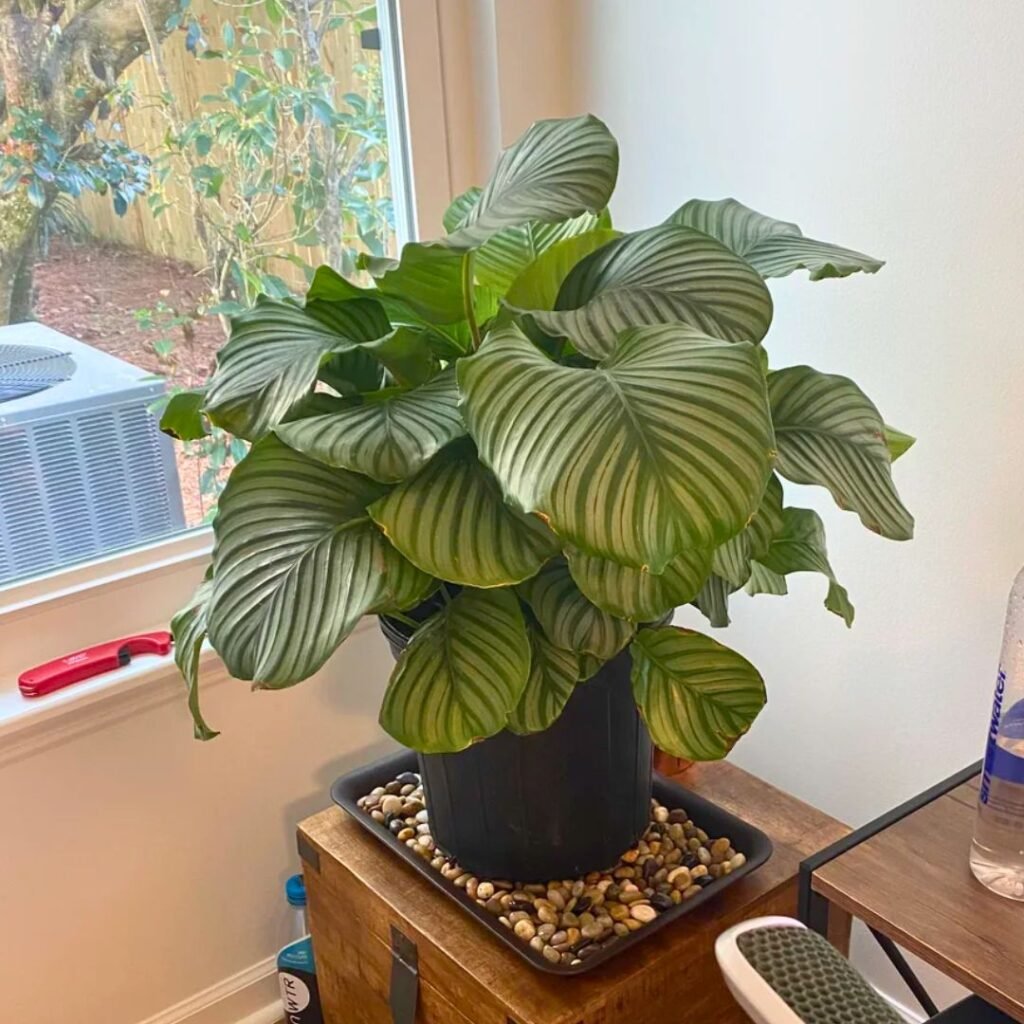
I like using a pebble tray to help my plants stay cool when it’s hot. This simple trick adds moisture to the air and helps with heat stress, especially if you don’t have a humidifier.
To make one, I grab a shallow tray and fill it with clean pebbles or stones. Then I pour in water so it sits just below the tops of the pebbles—never covering them. My plant sits on the pebbles, not in the water.
As the water slowly evaporates, it bumps up humidity around the leaves. Extra humidity keeps leaves cooler and helps prevent them from drying out. I check the water level every day and top it off if it’s getting low.
Don’t let the pot sit directly in the water or you’ll risk root rot. The pebbles keep everything safe.
Honestly, it’s a quick, cheap fix. Setting up a pebble tray takes hardly any time at all. My plants always look a bit happier during heatwaves when I use this method.
4) Rotate plants out of direct afternoon sun
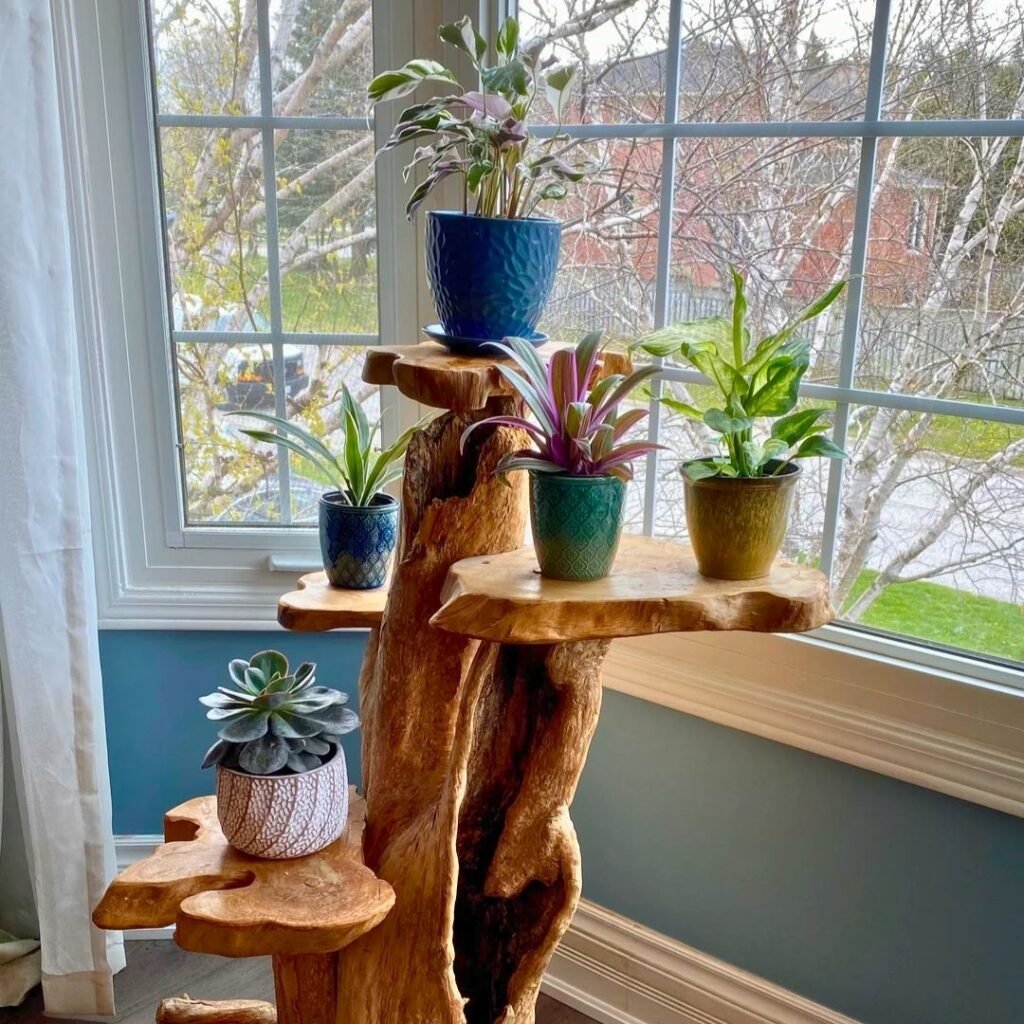
Every day, I check where the afternoon sun hits in my rooms. That sun can get brutal and really heat up my plants.
When the sun starts blasting in, I just rotate or slide my plants a few feet away from the windows. It keeps their leaves from frying.
I’ll move them back in the morning or later in the day, so they still get enough light without all the heat. If a pot’s heavy, I use a rolling tray to make things easier.
Even just swapping spots with plants that like more sun works out pretty well. My shade-loving plants perk up when I pull them out of the heat.
Blinds or sheer curtains help, but shifting plants out of harsh afternoon rays is honestly one of the easiest ways I keep them cool.
5) Group plants together to create a microclimate
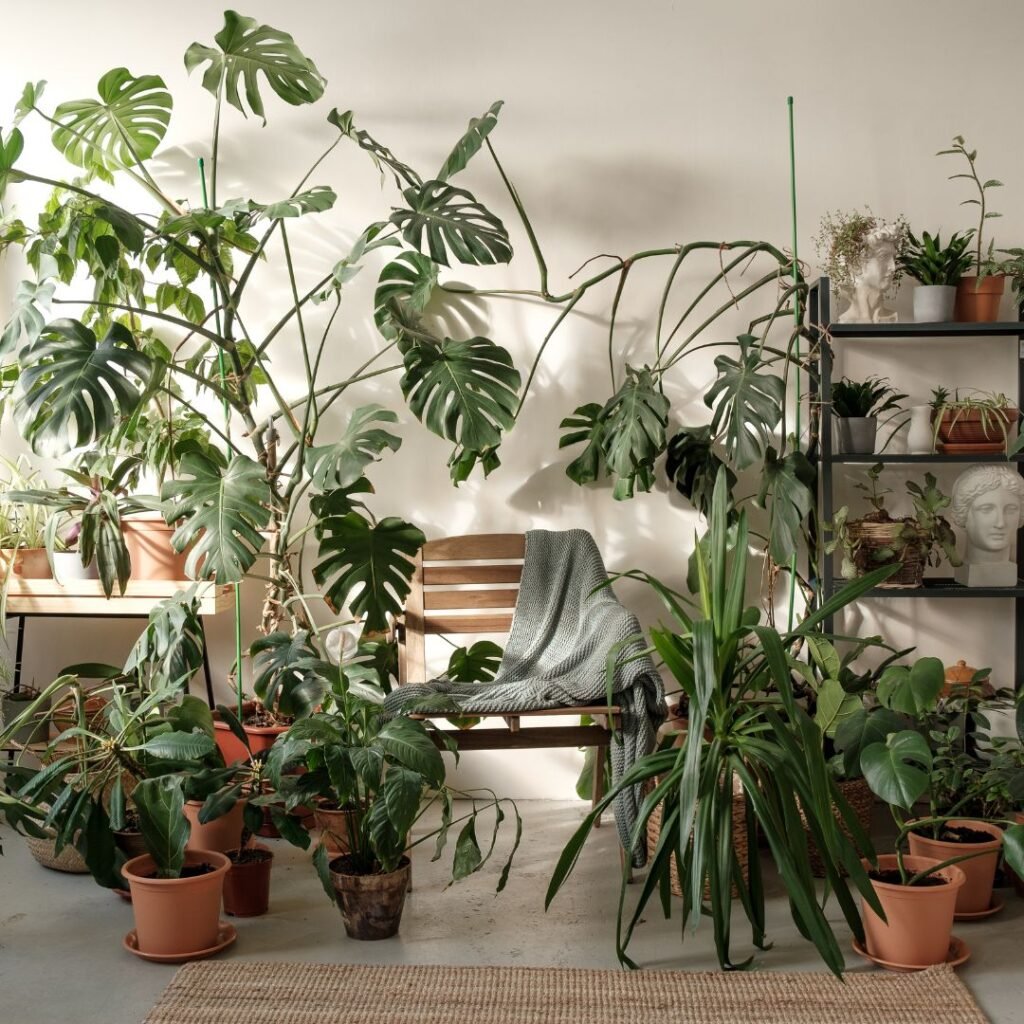
When I bunch my houseplants close together, they help each other stay cool. Grouping plants creates a mini environment, or microclimate, that holds moisture in the air.
I notice my plants need less watering when they’re in a group. The leaves let out moisture, and the group traps it nearby.
I put taller or bushier plants around the edges to give shade and shelter to the smaller ones in the middle. That natural shade helps protect sensitive plants from harsh sunlight.
I try not to crowd them too much, so everyone gets enough air and room to grow. With enough space, the plants help each other out and stay healthy.
In hot weather, I check my grouped plants a bit more often. I can spot which ones are struggling and give extra care if they need it.
Understanding Heat Stress in Houseplants
High temperatures can be rough on houseplants. I try to catch early warning signs and pay attention to how the room temperature affects my plants.
Signs Your Plants Are Overheating
When my plants get too hot, they let me know. Leaves may wilt even if the soil is damp, and leaf edges can turn brown or crispy.
Sometimes I see faded or yellowing leaves, or a plant might drop leaves or flowers early. Growth can slow down, too.
Here’s what I look for:
- Wilting, even after watering
- Brown, dry leaf edges
- Yellowing or pale leaves
- Dropping leaves or blooms
- Slower growth than usual
Catching these signs early helps me avoid lasting damage.
Why Room Temperature Matters

Houseplants like steady temperatures. Most seem happiest between 65–75°F (18–24°C) during the day, with a little drop at night.
Anything over 85°F (29°C) tends to stress my plants out. High heat speeds up water loss, so the soil dries faster.
Hot rooms with bad airflow or too much sun make things worse. Roots and soil can heat up, making it tough for plants to take in water.
I keep an eye on the room temperature and try to avoid any big swings or sudden spikes.
Creating an Indoor Microclimate
I use a few basic tricks to help my plants feel cooler, even when my place heats up. Moving air around and changing where I put my plants can really help.
How Air Circulation Affects Plant Comfort
I’ve noticed that good air movement keeps my plants from getting too hot and stuffy. Still air traps heat around the leaves, making them droop or get scorched.
Sometimes I use a small fan on low to move air gently, but I never aim it right at the leaves. A light breeze keeps temperatures steady and helps prevent mildew.
If I don’t have a fan, I’ll just open windows on different sides of the room. That sets up a cross-breeze and cools things down, especially in the morning or evening.
Adjusting Placement to Reduce Heat Exposure
I pay attention to where my plants sit. Direct sunlight can make leaves super hot, especially behind glass. I’ll move pots away from the hottest spots or hang a light curtain to filter the sun.
If a certain spot feels warmer, I’ll move plants to a cooler wall or near a shaded door. Elevating pots on a plant stand or table helps, too—it keeps heat from building up under their trays.
I switch things up when the weather changes, keeping the most sensitive plants away from heat sources like TVs or heaters. These small tweaks keep my houseplants looking pretty good, even during a heatwave.
Frequently Asked Questions
I get a lot of questions about keeping houseplants cool during summer. From picking the right plants to simple, practical tips, there’s a lot you can do without much fuss.
What are the best indoor plants to help lower room temperature?
I usually recommend snake plants, peace lilies, pothos, and ferns. These guys are great at releasing moisture and can help a room feel a bit cooler. Palms are also a good pick since they handle humidity and shade.
Can I use houseplants to effectively cool my home environment?
Houseplants can raise humidity and give a little cooling through transpiration. They’re not a substitute for air conditioning, but honestly, rooms with more plants feel less dry and stuffy—especially with some airflow from open windows.
Are there any low-cost methods to maintain my houseplants cool during a heatwave?
Definitely. I put my plants in terracotta pots to keep roots cooler. I also use a pebble tray with water to boost humidity and help keep leaves from drying out.
What are some tips for keeping my plants cool without using air conditioning?
I always move my plants out of direct afternoon sun and set them near open windows for fresh air. Grouping plants together makes a small zone with higher humidity and cooler air, which helps them handle the heat a lot better.
How does the presence of houseplants contribute to indoor air cooling?
When plants release water vapor during transpiration, they boost the humidity in the room. Sometimes, this can actually cool the air a little.
Honestly, I notice the effect most when I bunch a few plants together in one area. It’s not dramatic, but you might feel a subtle difference.
Could you suggest natural ways to protect plants from extreme indoor heat?
I usually throw up some curtains or even just a spare cloth to make a bit of shade when the sun gets too intense. Blinds work too if you’re into that.
Sometimes I’ll rotate the pots around, just to make sure no one plant is hogging all the light or getting scorched. It seems to help, honestly.
Oh, and I like to use a pebble tray—just fill it with a bit of water under the pot, nothing fancy. I also try to keep the pots off surfaces that get super hot.
Recommended Garden Supplies
| Product Image | Our Recommended Gardening Supplies | Check Offers! |
|---|---|---|
Top Top
Top
Top
Top
Top
Top
Top
Top | rePotme Houseplant and Tropical Classic Potting Soil Mix | Check Offer On Amazon |
 Top
Top
Top
Top
Top
Top
Top
Top | Espoma Organic Indoor Plant Food | Check Offer On Amazon |
 Top
Top
Top
Top
Top
Top
Top
Top | GooingTop LED Grow Light 6000K Full Spectrum Clip Plant Growing Lamp | Check Offer On Amazon |
 Top
Top
Top
Top
Top
Top
Top
Top | Soil Moisture Meter | Check Offer On Amazon |
 Top
Top
Top
Top
Top
Top
Top
Top | Govee Hygrometer Thermometer, Bluetooth Enabled! | Check Offer On Amazon |
 Top
Top | LEVOIT Humidifiers for Large Room(Best For Plants) | Check Offer On Amazon |
 Top
Top
Top
Top
Top
Top
Top
Top | Upgraded DIY Automatic Drip Irrigation Kit, 15 Potted Houseplants Support | Check Offer On Amazon |
 Top
Top
Top
Top
Top
Top
Top
Top | Stainless Steel Heavy Duty Gardening Tool Set | Check Offer On Amazon |
 Top
Top
Top
Top
Top
Top
Top
Top | Bonide Insecticidal Soap | Check Offer On Amazon |
 Top
Top
Top
Top
Top
Top
Top
Top | Bonide 32 oz Spray Neem Oil for Organic Gardening | Check Offer On Amazon |
 Top
Top
Top
Top
Top
Top
Top
Top | Garden Safe Fungicide | Check Offer On Amazon |


